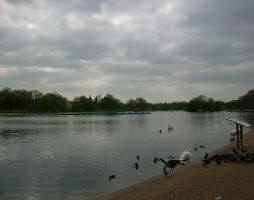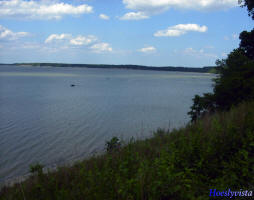 Managing wastewater treatment at the river-basin scale
Managing wastewater treatment at the river-basin scale
The EU Water Framework Directive1 requires policymakers to consider the management of water e.g. in rivers, lakes and streams, at the scale of the river basin, but can wastewater treatment systems be managed at the same scale? To help policymakers answer this question, a team of Spanish researchers have created a method for assessing the integrated operation of wastewater treatment plants in a river basin. Uniquely, the method considers both local and global environmental factors and an economic assessment.
Applied to a pair of integrated wastewater treatment plants in the Besos river catchment in north-east Spain, the researchers found that linking the two plants produced economic and broad-scale environmental benefits. However, when the researchers looked at local environmental concerns they found that the connection between the two plants should only be operated under certain conditions, thereby reducing the economic and global environmental benefits gained from building the pipeline. All wastewater treatment systems must in any case comply with the Urban Waste Water Treatment Directive2, to ensure that there is no risk of pollution by inadequately treated wastewater.
Previous studies of integrated wastewater treatment systems have looked at either environmental or economic factors, but none have examined the two at the same time. It is important to consider both, because while economic benefits are always most welcome, as the infrastructure is usually very expensive, they should never undermine the protection of the environment. The researchers noted that any such assessment would benefit from a Life Cycle Assessment approach, and that environmental concerns must include local factors, such as the condition of nearby water bodies fed by the outflow from the treatment plants. These are in addition to 'global' factors, such as impacts on the air, water or soil caused by emissions from the plants.
The researchers applied their model to two connected wastewater treatment plants in the Besos catchment. The system consists of two treatment plants, La Garriga and Granollers, connected by a 1km long gravity-flow pipeline from La Garriga to Granollers. The case study was based around three scenarios: no interconnection, which was used as a baseline, continual interconnection and interconnection only when local environmental conditions favoured it. Connecting the two treatment plants produced substantial economic benefits due to reduced electricity use at La Garriga, and increased electricity generation from biogas and cheaper sludge processing at Granollers. Annual savings for the continual interconnection scenario were around €72 000, and around €45 000 for the limited interconnection scenario.
The study also highlighted global environmental benefits, as connecting the two plants reduced natural resource use, greenhouse gas emissions, ozone-depleting gas emissions, the impact of toxic substances on marine ecosystems and the production of reactive chemicals due to exposure of other pollutants to sunlight. Pipeline construction had a negligible impact on ecological considerations. Reductions in global environmental impacts were greatest for the complete interconnection scenario. However, the interconnection did cause an increase in heavy metals in aquatic and terrestrial ecosystems, although the researchers note that this could be due to assumptions they had to make for the analysis, rather than a real increase.
Furthermore, a study of local environmental conditions showed that removal of the outflow from La Garriga (diverted to Granollers via the pipeline) would in arid summer months reduce the flow of the river fed by both plants below the minimum required to sustain the river ecosystem, suggesting the interconnection should not be operated between June and August. This highlights the importance of considering local as well as global concerns.
The results show that connecting multiple wastewater treatment plants can have economic and environmental benefits, although there may be trade-offs to consider. The researchers also caution that their results are case-specific, and based on assumptions made for the system being studied that might not be true elsewhere.
1. http://ec.europa.eu/environment/water/water-framework/index_en.html
2. http://www.eea.europa.eu/data-and-maps/data/waterbase-uwwtd-urban-waste-water-treatment-directive-3
| Contact information |
Email: joaquim.comas@udg.edu |
|---|---|
| News type | Inbrief |
| File link |
http://ec.europa.eu/environment/water/water-framework/index_en.html |
| Source of information | Morera, S. Comas, J. Poch, M. & Corominas, L. (2015) Connection of neighbouring wastewater treatment plants: economic and environmental aspects. Journal of Cleaner Production 90: 34–42. DOI:10.1016/j.clepro.2014.11.047. |
| Keyword(s) | EU-WFD, wastewater treatment , river-basin scale |
| Subject(s) | ANALYSIS AND TESTS , CHARACTERISTICAL PARAMETERS OF WATERS AND SLUDGES , DRINKING WATER , DRINKING WATER AND SANITATION : COMMON PROCESSES OF PURIFICATION AND TREATMENT , ENERGY , HEALTH - HYGIENE - PATHOGENIC MICROORGANISM , HYDRAULICS - HYDROLOGY , INDUSTRY , INFORMATION - COMPUTER SCIENCES , INFRASTRUCTURES , MEASUREMENTS AND INSTRUMENTATION , METHTODOLOGY - STATISTICS - DECISION AID , NATURAL MEDIUM , POLICY-WATER POLICY AND WATER MANAGEMENT , PREVENTION AND NUISANCES POLLUTION , RIGHT , RISKS AND CLIMATOLOGY , SANITATION -STRICT PURIFICATION PROCESSES , SLUDGES , WATER QUALITY |
| Relation | http://www.eea.europa.eu/data-and-maps/data/waterbase-uwwtd-urban-waste-water-treatment-directive-3 |
| Geographical coverage | n/a |
| News date | 25/06/2015 |
| Working language(s) | ENGLISH |
 you are not logged in
you are not logged in





